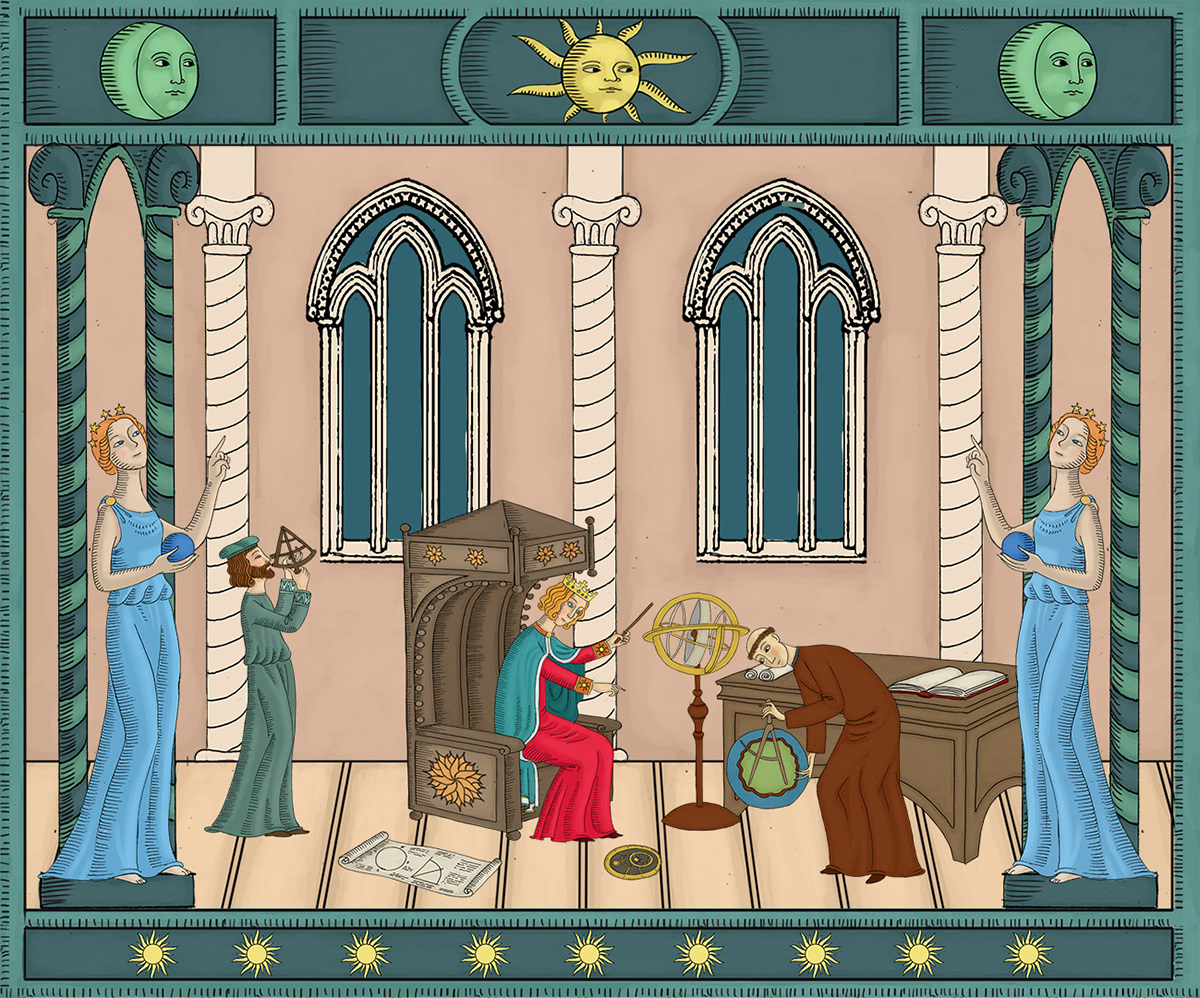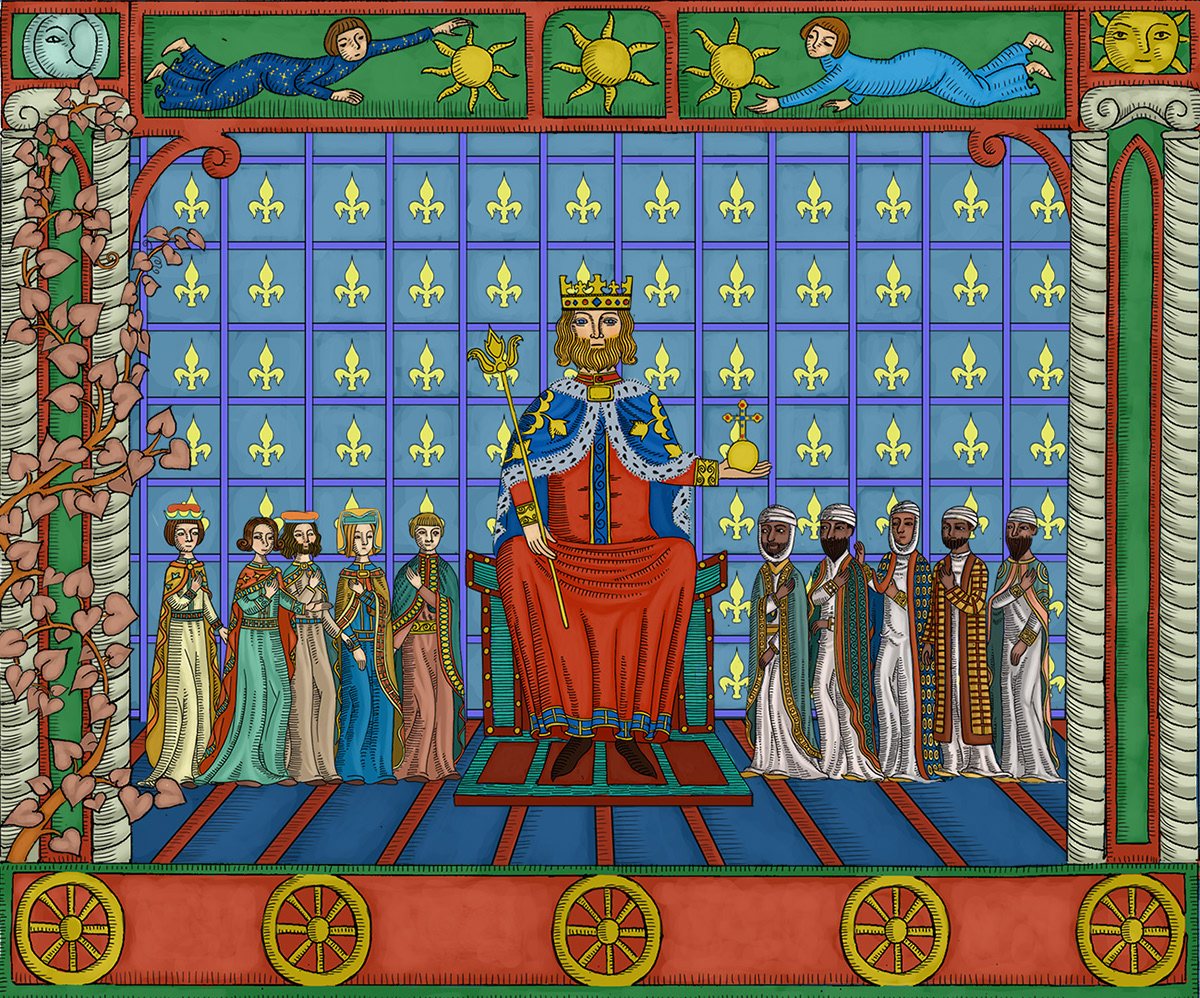This is a project commissioned by Università Federico II of Naples, I worked on it from april 2019 to June 2019, together with Cupware Factory. It tells the story of Frederick II of Swabia, one of the greatest medieval emperors. I drew the illustrations and guys from Cupware worked on animations based on the direction and the script by Marco Capasso. You can find all the credits at the end of the video below. (the captions about every illustrations are from Wikipedia)
Frederick II (26 December 1194 – 13 December 1250; Latin: Fridericus, Federicus, Italian: Federico, German: Frîderich, Friedrich) was King of Sicily from 1198, King of Germany from 1212, King of Italy and Holy Roman Emperor from 1220 and King of Jerusalem from 1225. He was the son of emperor Henry VI of the Hohenstaufen dynasty and of Constance, heiress to the Norman kings of Sicily.Born in Iesi, near Ancona, Italy, in December, 1194, Frederick was the son of the emperor Henry VI. He was known as the puer Apuliae (son of Apulia).[note 2] His mother Constance gave birth to him at the age of 40, and Boccaccio related in his De mulieribus claris about the empress: as a Sicilian princess and paternal aunt of William II of Sicily, a prediction that "her marriage would destroy Sicily" led to her confinement in a convent as a nun from childhood to remain celibate and her late engagement to Henry at the age of 30. Some chronicles say that Constance gave birth to him in a public square in order to forestall any doubt about his origin such as son of a butcher. Frederick was baptised in Assisi.[note 3][8]

Speaking six languages (Latin, Sicilian, Middle High German, Langues d'oïl, Greek and Arabic), Frederick was an avid patron of science and the arts. He played a major role in promoting literature through the Sicilian School of poetry. His Sicilian royal court in Palermo, beginning around 1220, saw the first use of a literary form of an Italo-Romance language, Sicilian. The poetry that emanated from the school had a significant influence on literature and on what was to become the modern Italian language. He was also the first king to formally outlaw trial by ordeal, which had come to be viewed as superstitious.[5]



The German princes, supported by Innocent III, again elected Frederick king of Germany in 1215, and he was crowned king in Aachen on 23 July 1215 by one of the three German archbishops. It was not until another five years had passed, and only after further negotiations between Frederick, Innocent III, and Honorius III – who succeeded to the papacy after Innocent's death in 1216 – that Frederick was crowned Holy Roman Emperor in Rome by Honorius III, on 22 November 1220. At the same time, Frederick's oldest son Henry took the title of King of the Romans.

At the time he was elected King of the Romans, Frederick promised to go on crusade. He continually delayed, however, and, in spite of his renewal of this vow at his coronation as the King of Germany, he did not travel to Egypt with the armies of the Fifth Crusade in 1217. He sent forces to Egypt under the command of Louis I, Duke of Bavaria, but constant expectation of his arrival caused papal legate Pelagius to reject Ayyubid sultan Al-Kamil's offer to restore the Latin Kingdom of Jerusalem to the crusaders in exchange for their withdrawal from Egypt and caused the Crusade to continually stall in anticipation of his ever-delayed arrival. The crusade ended in failure with the loss of Damietta in 1221. Frederick was blamed by both Pope Honorius III and the general Christian populace for this calamitous defeat.

His army was defeated by the plague

So he was excommunicate

Problems of stability within the empire delayed Frederick's departure on crusade. It was not until 1225, when, by proxy, Frederick had married Isabella II of Jerusalem, heiress to the Kingdom of Jerusalem, that his departure seemed assured. Frederick immediately saw to it that his new father-in-law John of Brienne, the current king of Jerusalem, was dispossessed and his rights transferred to the emperor.


Frederick II is the author of the first treatise on the subject of falconry, De Arte Venandi cum Avibus ("The Art of Hunting with Birds").
It is a scientific book, approaching the subject from Aristotle but based closely on observation and experiment throughout, Divisivus et Inquisitivus, in the words of the preface; it is at the same time a scholastic book, minute and almost mechanical in its divisions and subdivisions. It is also a rigidly practical book, written by a falconer for falconers and condensing a long experience into systematic form for the use of others.
Frederick's pride in his mastery of the art is illustrated by the story that, when he was ordered to become a subject of the Great Khan (Batu) and receive an office at the Khan's court, he remarked that he would make a good falconer, for he understood birds very well.He maintained up to fifty falconers at a time in his court, and in his letters he requested Arctic gyrfalcons from Lübeck and even from Greenland. One of the two existing versions was modified by his son Manfred, also a keen falconer.



In the Kingdom of Sicily, he built on the reform of the laws begun at the Assizes of Ariano in 1140 by his grandfather Roger II. His initiative in this direction was visible as early as the Assizes of Capua (1220, issued soon after his coronation in Rome) but came to fruition in his promulgation of the Constitutions of Melfi (1231, also known as Liber Augustalis), a collection of laws for his realm that was remarkable for its time and was a source of inspiration for a long time after. It made the Kingdom of Sicily an absolutist monarchy; it also set a precedent for the primacy of written law. With relatively small modifications, the Liber Augustalis remained the basis of Sicilian law until 1819.

In 1224 he founded the University of Naples, the world's oldest state university: now called Università Federico II.

A man of extraordinary culture, energy, and ability – called by a contemporary chronicler stupor mundi (the wonder of the world), by Nietzsche the first European, and by many historians the first modern ruler.


